#shojosei
Text
As a manga girlie, I’m excited to see the conversation that’ll come from the anime adaptation of A Sign of Affection not JUST for the wonderful main leads but also for Oushi. I think the mangaka does a great job of making nuanced characters whilst also not falling into 2nd male lead trope. Like bro is NOT equally as good for Yuki as Itsuomi, he actually kinda fuckin sucks and has killer “nice guy” energy, but I also dont think he’s like a manipulative dude. He believes he’s well intentioned but he’s actually just forcing Yuki into this infantilizing role bc it’s easier for him to feel special to Yuki if he makes himself the only person capable of understanding her. He finds her cute, but it seems more like “cute” in the child or puppy way as opposed to “cute” personality wise. Bro needs a reality check, hopefully delivered to him by Yuki to snap him outta his haze, but I don’t necessarily think he’s evil or manipulative or irredeemable. He’s ableist, he’s an ass, and he’s far from a viable 2nd male lead, but I kinda hope that he goes the route of getting his shit together and pursuing translation seriously instead of falling further into the nice guy thing (which doesn’t seem like the way it’s going in the manga i think)
#shoujo manga#a sign of affection#yubisaki to renren#ashioki oushi#nagi itsuomi#yuki itose#anime and manga#manga#shojosei#rambles#anime adaptation#anime
162 notes
·
View notes
Text
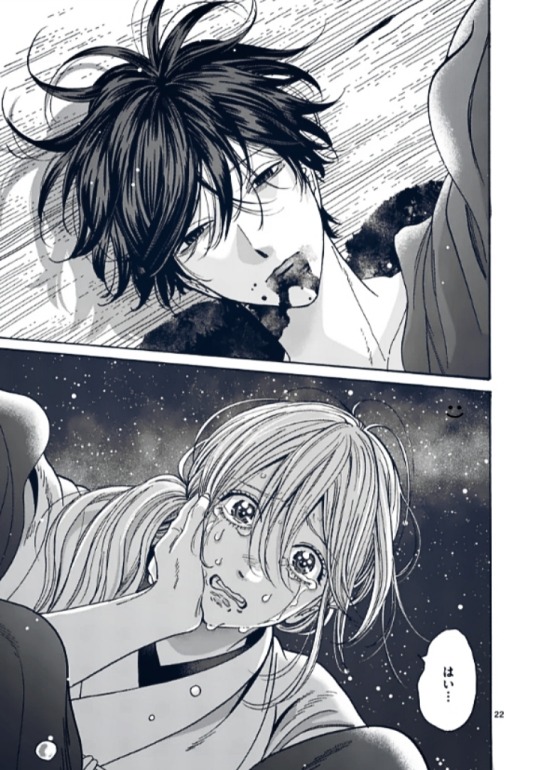

"I will give my heart to you."
ホタルの嫁入り (Firefly Wedding) - Chapter 17
#i really like the panels#it's so beautiful#firefly wedding#hotaru no yomeiri#satoko kirigaya#shinpei goto#shojosei#manga romance#romance manga#manga cap#manga panel#shojo manga#josei manga#manga aesthetic#manga edit
231 notes
·
View notes
Text


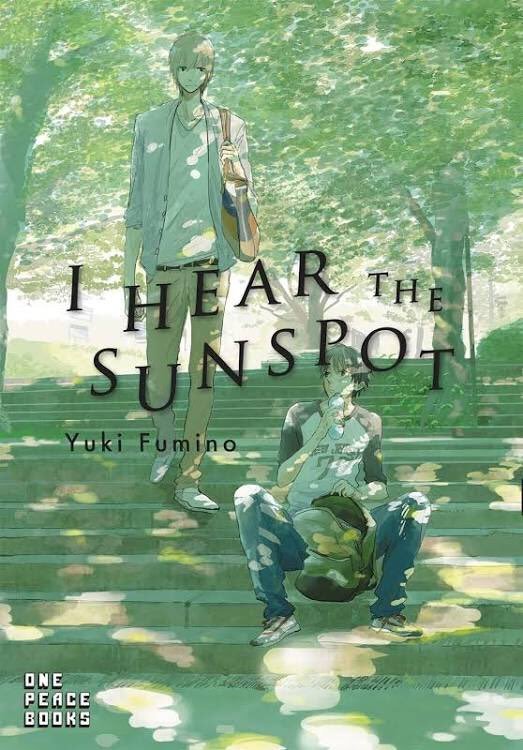
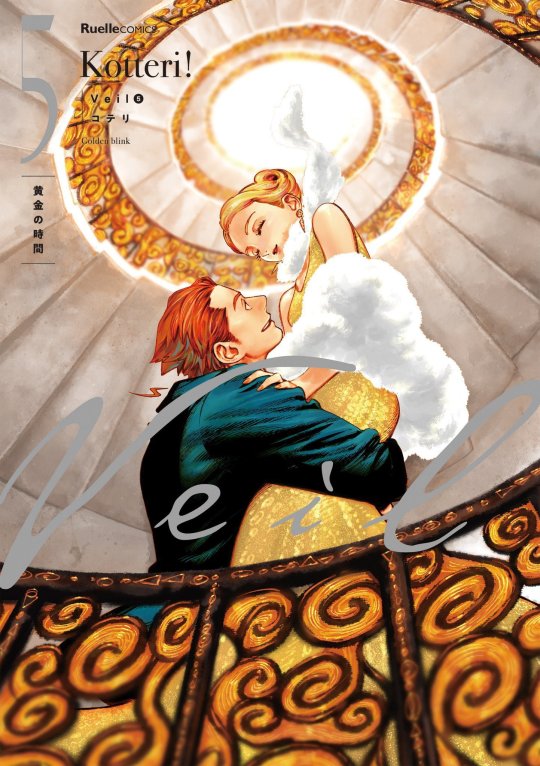
Shoujo/Josei manga featuring a disabled protagonist
Perfect World (Rie Aruga) - During a company get-together 26-year-old Tsugumi is shocked to encounter Itsuki, her crush from high school, and is even more shocked to learn that a SCI has left him paraplegic. Slowly, they rekindle their relationship… (12 volumes, complete)
A Sign of Affection (suu Morishita) - A chance encounter on the train leads to Yuki meeting Itsuomi, a boy who goes to her university. Something about Yuki makes Itsuomi fascinated, and something starts between them, as quiet as the falling snow. (Ongoing, 9 volumes, receiving an anime in 2024)
I Hear The Sunspot (Yuki Fumino) - College student Kohei is HOH and knows he may lose his hearing entirely one day. He tries to keep everyone at arm’s length, but is unable to do so for Taichi, the classmate he hired to be his note taker. (Ongoing, 6 volumes)
Veil (Kotteri) - Depicted as a series of short vignettes, Veil tells the story of the love between a policeman and a beautiful woman through glimpses of their quiet, intimidate moments away from others. (Ongoing, 5 volumes, recieving an English release in 2024)
#shoujo#josei#shojosei#manga#perfect world#rie aruga#a sign of affection#suu morishita#i hear the sunspot#yuki fumino#veil#kotteri
148 notes
·
View notes
Text
Which 2022/2023 shojosei anime from my latest post is your favourite/Which one are you most interested in?
Given my latest recommendation/review post (click here if you haven't seen it yet) on this topic I was wondering what others thought?
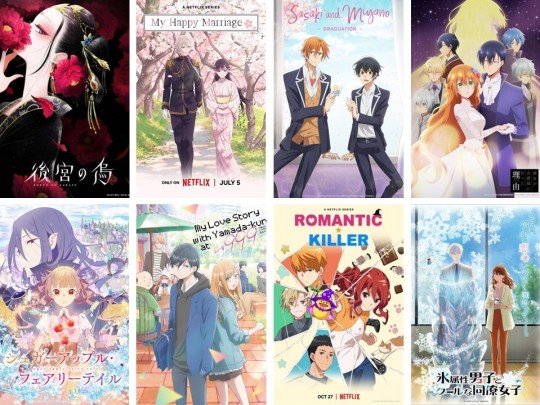
#shoujo anime#shojosei#josei anime#shoujo#anime#kōkyū no karasu#kokyuu no karasu#raven of the inner palace#my happy marriage#watashi no shiawase na kekkon#romance anime#sasaki to miyano#sasaki and miyano#why raeliana ended up at the duke's mansion#kanojo ga koushaku tei ni itta riyuu#sugar apple fairy tale#my love story with yamada kun at lv999#yamada kun to lv999 no koi wo suru#romantic killer#the ice guy and his cool female colleague#koori zokusei danshi to cool na douryou joshi
139 notes
·
View notes
Text
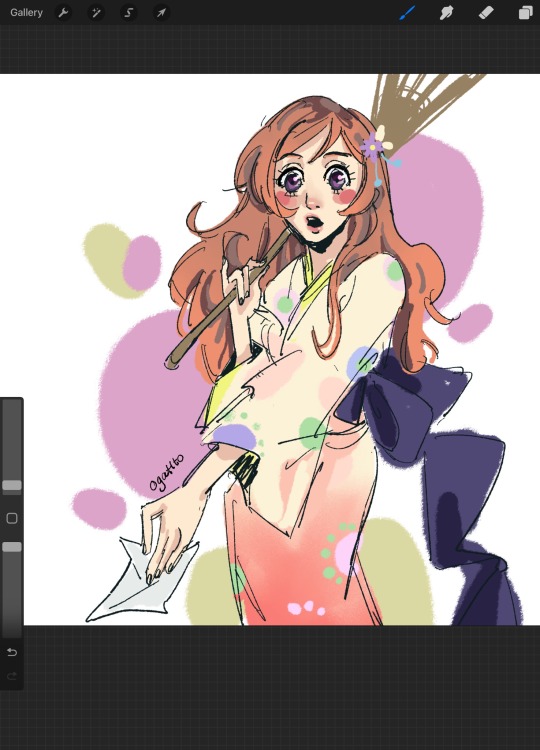
kamisama hajimemashita!
#artists on tumblr#my art#fan art#kamisama hajimemashita#kamisama kiss#shojosei#shojo manga#shojo manga fanart#shoujo#shojo fanart#kamisama kiss fanart#tomoe kamisama#nanami kamisama#kamisama hajimemashita fanart
129 notes
·
View notes
Text




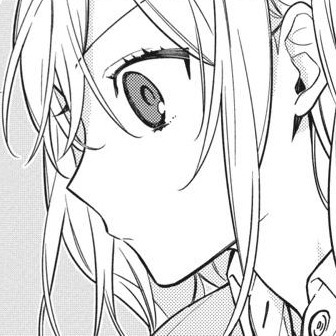


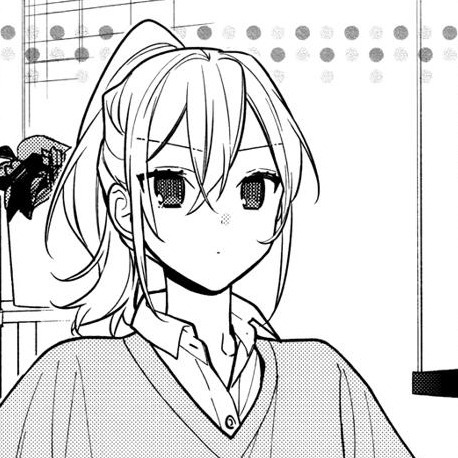

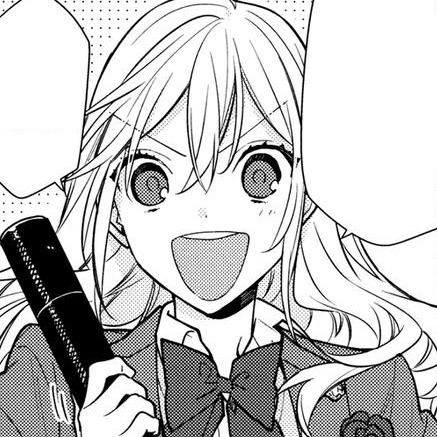
꒰ 📼 ꒱ .゚hori kyouko ; horimiya .
#horimiya#hori san to miyamura kun#horimiya icons#horimiya packs#horimiya layouts#manga icons#manga packs#manga layouts#hori kyouko#hori icons#hori kyoko#manga cap#manga panels#manga art#romance manga#manga#josei#shojosei#shojo#manhwa#manga moodboard#matching icons#b&w icons#girl icons#aesthetic icons#twitter icons#horimiya piece#cute icons#anime icons#anime packs
86 notes
·
View notes
Text
Imagine sleeping on an anime/manga that is a retelling of a Shakespeare play that shows the struggle of an intersex person who identifies as a man but has been feminized his entire life making him super uncomfortable as well as treated like an actual demon by his family to the point where he is actually convinced he is a demon and is in deep love with a man but loving a man makes him feel like a woman which is a feeling that he is very uncomfortable with so he has to grapple with all of these things and also the death of his father who was the only adult who treated him like he mattered and that he wasn't a demon.
Shonen bros could never. I say this as a Shonen enjoyer.
Go read/watch Requiem of the Rose King.
108 notes
·
View notes
Text
Animanga History #1: Attack No. 1


It's no secret that volleyball is a popular sport in animanga- just look at the incredible success of Haikyu!! : Decisive Battle at the Garbage Dump, the fifth largest opening weekend for a JP movie ever. But where did the obsession start?
In 1968, with a shoujo manga by the name of Attack No. 1
(though Haikyuu!! might have found more inspiration in its rival The V Sign!). A series spurred on by a women's factory team taking the competitive (and subsequently Olympic) volleyball world by storm, the two events represent a huge change in tidings for anime and manga, though specifically in this case in relation to shoujo. So, come take a look at the incredibly interesting and surprisingly impressive history that Chikako Urano's second ever serialized work has left behind.
#shoujo#shojo#shoujo anime#shojo anime#shoujo manga#shojo manga#shoujosei#shojosei#haikyuu#haikyū!!#haikyuu anime#haikyuu movie#manga history#anime history
8 notes
·
View notes
Text
"Me and Kimono" | Interview with Atsufu
Translation of the interview with Moyoco Anno published in the June 2023 issue of "Neppū" on Note.
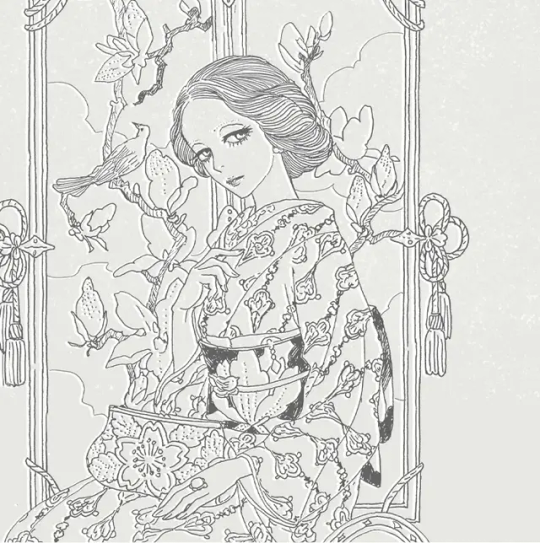
Starting from the May 2021 issue, Moyoco Anno's cover illustrations mark the beginning of the third year with this June issue. When you think of Moyoco, you might recall the image of modern, real-life women wrapped in contemporary fashion, symbolized by works like "Hataraki Man" and "Happy Mania." So, why did Moyoco choose to depict "women in kimono, with a somewhat classical vibe" on the cover? We inquired about Moyoco's affection for kimono, which underlies this decision. Nowadays, Moyoco's passion for kimono has grown to the extent of establishing her own brand that creates kimono with her unique artistic style. This "kimono fever" seems to stem from a desire to see more people casually wearing and embracing Japan's beautiful nature, such as its plants and birds, through clothing.
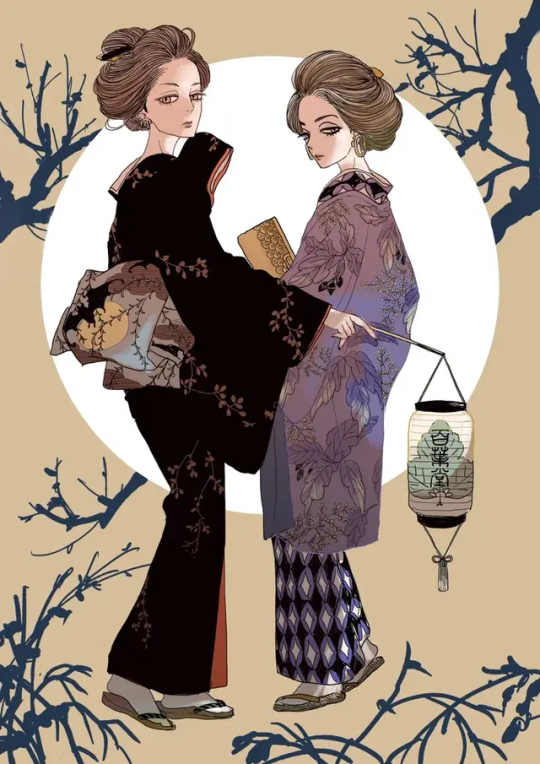
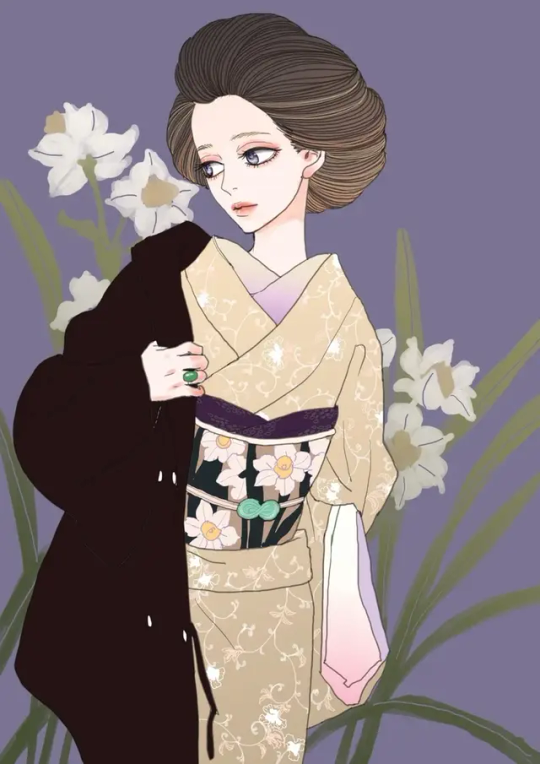
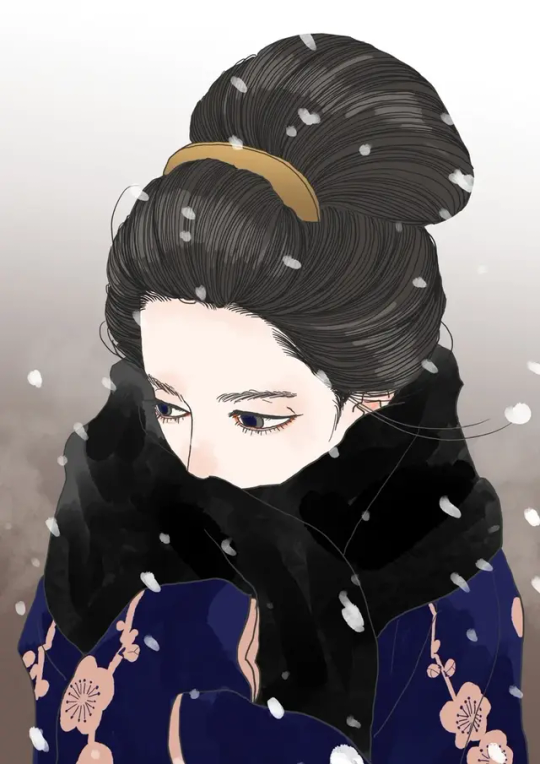
My grandfather's kimono and the kihachijo he wore at the age of 3
Interviewer: Thank you very much for illustrating the cover for the past two years since the May 2021 issue. It has been well received that 'women in kimono evoke various stories,' and we are grateful for that. As a result, we have decided to continue for another year. Producer Suzuki (Toshio) even joked, 'We would like to continue until Moyoco-san gets tired of it.'
Anno: Is that true? Isn't it just that you're getting too lazy to change (laughs)?
Interviewer: That's not true at all (laughs). I'm serious. So, I'd like to take this opportunity to ask you about your connection with kimonos, Moyoko-san, and hear a comprehensive discussion about it. When did you first become fascinated with kimonos?
Anno: My grandfather was a kimono wearer. He always wore kimonos in his daily life. Perhaps it was also because of the area, Shimokitazawa in Tokyo, but when I was a child, there were quite a few people like that in the neighborhood. If there were about ten elderly people in the neighborhood, for example, about two of them would be wearing kimonos. Among relatives, it was only my grandfather, though.
Interviewer: So it wasn't yukata, but kimonos.
Anno: They were ordinary men's kimonos. Made of sturdy fabric, they came with a haori, juban, and ensemble. He also wore a coat for kimonos in winter. When we lived together, my grandfather's way of casually taking off his kimono was impressive. Men's kimonos are designed to be worn at the same length, so the juban worn underneath can be removed together. He would hang it on a clothes rack, wearing only fundoshi and underwear, and then go to bed just like that.
Interviewer: It's like shedding a skin, isn't it?
Anno: Exactly. Then, when I woke up in the morning, I would put it back on just like that (laughs). Since kimonos aren't washed every day, men's kimonos are quite convenient, right?
Interviewer: Your grandfather was a tailor, if I recall correctly.
Anno: Yes, that's right. But he had already retired by then. However, since he loved sewing even after retirement, he was always making something, and when I was little, he made various things for me too.
Interviewer: When did you start experiencing kimonos yourself?
Anno: I was already wearing a yellow hakama ensemble when I was about three years old. I can't remember if it was a gift or someone's hand-me-down, but I wore it for New Year's and in the winter. I always used to fuss about not wanting to take it off once it was put on me.
Interviewer: Was it comfortable to wear?
Anno: I loved it. Maybe part of it was because I was happy to be with my grandpa. Also, one time when the maid who was at my grandfather's house said she was going back to her hometown, I followed along. I was delighted to be dressed in children's festival attire there. We brought back that festival attire and kept it at home.
Interviewer: So, it seems like you were quite enthusiastic about kimonos even at the age of three.
Anno: Indeed, I liked kimonos from that time. But you know, it's a hassle for parents to dress you up every time, right? When I was little and happened to have something that fit me, they would dress me up, but as I grew older, it wasn't so easy. Still, they always bought me yukatas every year. When I was in elementary school, whenever there was a Bon dance in the neighborhood, my school friends and I would all go out wearing yukatas. Once I was dressed in a yukata, I would wear it every day for about a week from then on. Like, going to the school pool in the morning during summer vacation, and then coming home and wearing a yukata around the house.
Interviewer: Didn't you ever walk around the neighborhood dressed like that?
Anno: If you walk around in a yukata when it's not a festival, you'll definitely get some strange looks (laughs).

Encountering antique kimonos
Interviewer: What was the subsequent evolution of your interest in kimonos like?
Anno: When it comes to kimonos for girls, it's usually associated with the coming-of-age ceremony, right? Well, about a week before that, I injured my foot. What's more, at that time, my family was too poor to afford to borrow a formal furisode for the coming-of-age ceremony. So, I didn't wear a kimono for the ceremony. Then, because they felt sorry for me not being able to attend the ceremony, my friends suggested we all get together wearing kimonos. They all had kimonos bought for them, so they wanted to wear them again at least once. They were all dolled up in furisode with fluffy white shawls, but I was the only one in a plain casual kimono. Mine was a cute komon with a navy background adorned with little hammers and treasures, but compared to everyone else's formal attire, it did seem a bit plain (laughs).
Interviewer: Even though your friends didn't mean any harm, it must be a bitter memory.
Anno: At that time, I realized that you really need financial stability to afford kimonos, and I distanced myself from them a bit. Buying a kimono isn't the end of it; you also need a place to store it. You definitely need a certain amount of storage space. And because the rules for storing kimonos are different from regular clothes, you need a dedicated space for them.
Interviewer: Did your enthusiasm for kimonos reignite around the time you started serializing "Sakuran," which features Kiyoha, a courtesan in Yoshiwara, around 2001?
Anno: I think it was before that… It was around my mid-20s when I was living alone in Ebisu, Tokyo. There was a pop-up antique kimono shop at an event venue, and I encountered some really beautiful kimonos there. I wore one of those kimonos for the cover of "AERA" magazine (May 5, 2003 issue). It was the first time I encountered an antique kimono that fit me perfectly in terms of length, even with my height. It was a beautiful silk kimono with a reddish-purple hue and vertical stripes with a bluish tint.
Interviewer: Did you dress yourself for the "AERA" photo shoot?
Anno: Yes, I did. Looking back now, I realize it was a mess, and I wonder how I managed to go to the shoot (laughs).
Interviewer: Why did you decide to feature kimonos in the photos?
Anno: I really didn't have anything else to wear (laughs). I wasn't making enough money to indulge myself. Although I wasn't in debt anymore, I still didn't have time to go shopping for clothes or anything like that.
Interviewer: You didn't have the mental space for it either.
Anno: Exactly. When I was working at home, I usually just wore casual clothes, so I thought about what to wear for the "AERA" cover.
Interviewer: Ah, you remembered you had kimonos.
Anno: Ironically, I had nothing but kimonos (laughs). I tend to be like that quite often. People sometimes say I'm like a fashionable manga artist, but that's not the case at all.
I remember when I was invited to a home party by fellow female manga artists at the time. I thought it was just a casual gathering at home, so I went there thinking it was fine to wear casual clothes, but everyone else was dressed head-to-toe in Chanel, Prada, or Gucci.

Visiting vintage clothing stores in Kamakura
Interviewer: You got married to director Hideaki Anno in 2002 and moved to Kamakura in 2004. I heard that during this time, you were already collecting kimonos by visiting nearby vintage clothing stores.
Anno: It all started when we had the chance to go to Kyoto shortly after we got married, and we met a friend of the director who was from Kyoto and was also an expert in kimono, as his wife was a Kyoto native who was also into Japanese traditional dance. So, when I casually mentioned that I was also interested in kimonos, she introduced me to a well-established kimono shop in Kyoto. Since the director was very enthusiastic about our marriage and told me to "buy whatever you want," it kind of turned into a situation like that (laughs).
Then the wife said, "You'll get the hang of it if you try wearing it once," and she dressed me up on the spot. The next day, when we were heading back to Tokyo, she selected a complete set of necessary kimono dressing tools for me. That experience gave me a sense of how to wear them properly. With that base knowledge, I later learned to wear them by watching tutorials online or reading books.
Interviewer: So, did your interest in kimonos reignite around the time of your marriage?
Anno: I was hesitant to wear the tailored kimonos sent from Kyoto to Kamakura because I was afraid of ruining them. So, I started buying cute patterned or sturdy Meisen kimonos from vintage clothing stores in Kamakura and just tried wearing them out. I felt like it was okay to wear them since they wouldn't be a big loss if they got dirty. That's how I started wearing kimonos frequently. However, the kimonos that the director bought for me in Kyoto haven't been worn at all (laughs).
Interviewer: Do you have any unique points to look out for when seeing kimonos at vintage clothing stores, as someone like you who frequently visits them?
Anno: It's definitely the patterns unique to antiques. There are hardly any kimonos left from the Meiji period. There are some from the Taisho period, but their condition isn't great. So naturally, there are a lot from the Showa period, maybe around right after the war. The charm of the patterns and the beauty of the fabric. Also, there's something cute about the "Hakkake," which is the fabric attached to the hem of the kimono. Usually, it's plain, but sometimes it's lined with pink in a white kimono with purple patterns, which is a color scheme unique to that era.
Initially, I'd wear kimonos and then turn them into a haori, then into a juban, and if the pattern is flashy, it could become an obi, and eventually, it could be used as the lining of a haori. I like that you can see the progression with antiques.
Interviewer: Do you learn this kind of knowledge from books or the internet?
Anno: Yes, and I also ask friends who share the same interest in kimonos, or I talk to people at vintage clothing stores. One of the assistants who happened to visit my place was working part-time at a famous vintage kimono store while also working as an assistant. She told me that near my house in Kamakura, there was a vintage store with a lot of piled-up clothes that were not organized at all. The store had many good items, but they were all chopped up and turned into dresses, and a certain famous actress used them as costumes. So, she asked me to hurry up and buy the old kimonos before they were chopped up and rescue them (laughs).
I couldn't draw 'Sakuran' without actually trying on kimonos
Interviewer: Does "Sakuran," set in Yoshiwara, have any connection to the resurgence of your love for kimonos?
Anno: Initially, I didn't pay much attention to kimonos when I started drawing "Sakuran," but I realized the difficulty of drawing kimonos once I actually started drawing them. With Western clothing, you see someone wearing it every day, so you can kind of draw it in any pose intuitively. But with kimonos, I had no idea, for example, how the sleeves should look when the character moves. So, when I was drawing "Sakuran," I often wore kimonos and moved around to draw them.
Interviewer: Did you draw manga while wearing kimonos?
Anno: Not during the inking stage, because it would be troublesome if ink splattered on them. But I always wore them during the stage where I confirmed how they looked. The way kimonos were worn back then and today is completely different, so I sometimes adjusted them to match the style of that time. For example, courtesans tie their obi at the front. Also, depending on the era, in the Edo period, they didn't fold the obi into two. So, it was very wide. And the patterns are clearly different between the Edo period and the Meiji, Taisho, and Showa eras. There's a difference between the Edo-style patterns that still exist today and the modern antique patterns of the Meiji, Taisho, and Showa eras. Of course, there were many elderly people who wore Edo-style kimonos even in the Meiji era, but the designs preferred by young people have more of a modern feel. Furthermore, there are differences between Edo (Tokyo) and Kyoto. Edo-style kimonos often have patterns that look like monotone from a distance, like screentones, while Kyoto kimonos often have distinct and independent patterns. They have a relatively elegant feel.
Interviewer: Your knowledge deepened while drawing manga, and the cycle of acquiring more things continued, right?
Anno: There was a time when I had an extraordinary amount of things, so I sold everything once. I even went through a phase of bidding on Yahoo Auctions. There were times when I couldn't do it myself because I was busy with work, so I asked my assistants to bid for me (laughs).
Interviewer: How many kimonos do you currently have?
Anno: Not that many. Probably less than 50. Once I started making them myself, I mostly wore the ones I made.
Drawing the desired pattern, scanning it, and then printing it onto fabric
Interviewer: So, you finally started making your own kimonos. That's the original kimono brand "Hyakuyoudo" that you launched about two and a half years ago, right? Please tell us about the process that led you to start making kimonos yourself.
Anno: Actually, after returning from Kamakura to Tokyo, there was a period when I didn't wear kimonos for a while.
Interviewer: Why is that?
Anno: It's like a habit, you know? When you wear something frequently, it becomes natural to wear it, but once you stop, it suddenly becomes a hassle, and there was a period when my heart drifted away from kimonos. Then, suddenly, when I felt like it was time to start wearing kimonos again, I realized that I had forgotten a lot of what I had learned before, so I decided to find a teacher and learn the basics again.
Interviewer: Forgive my amateur sense, but is kimono dressing really that difficult?
Anno: At first, it's more like as long as it doesn't fall off, it's fine, but as you get used to it, you start to notice things like why does this part always feel tight when I sit down, or why does this part always sag after a while. Or why does that person look so good in a kimono?
Interviewer: Is it really that different?
Anno: Yes, it is. So if you want to wear it beautifully, it's better to learn from a professional. So, one day, I took some old kimonos and obis that I had to a dressing lesson. I actually wanted to use this old obi, but the fabric was too worn out to use, so I said, "You can print this."
Interviewer: What do you mean by "print"?
Anno: It's a photographic process. For example, if you have a patterned fabric that's already worn out and you want to make a new one, you can scan the worn-out fabric to copy the pattern. Once you import that data into a computer, you can adjust the color tones and remove stains on the screen. Since kimonos are usually made by repeating patterns of about one meter, all you need is to scan that one stroke cleanly. Once it's in the computer, you can even change the background color.
Interviewer: So, it's a way to salvage patterns from worn-out antique kimonos?
Anno: Yes, at first, I was just copying them rather than redesigning them. I had some favorite obi patterns, so I scanned them and kept them for storage. For example, it's just a pattern of swirls drawn in pointillism, but they're all dyed from Ise katagami, so it's completely different from what you would get by digitally dotting it now. The intervals between each dot vary slightly, and each dot has a different expression, some are slightly longer or thinner. When you look at the whole thing, it creates a fluctuation. I think you can make things that look the same at first glance digitally, but the finish is completely different. So, I had the Ise katagami pattern scanned, inverted the colors, and made it into a komon pattern and then tailored it into a kimono. I tried two or three of those, and it was so much fun. Of course, I did it all for my personal kimonos.
Interviewer: So, did you start drawing patterns yourself from there?
Anno: Initially, when I told my teacher that I wanted to scan the patterns of summer clothes, which are often made of ro fabrics, she said they couldn't be scanned because the fabric itself is woven to be translucent to keep it cool. I was shocked, thinking, "Wait, isn't summer clothing more likely to get dirty and need to be scanned to preserve the pattern?" So, I decided to draw them myself.
Interviewer: I recall from an interview in a kimono magazine that you mentioned you couldn't scan them with a machine, so you memorized the patterns with your eyes and drew them by hand.
Anno: Right. Since the current patterns are copyrighted, I copy the antique patterns with my eyes. Instead of tracing them directly, I memorize the patterns I see in shops, bring them home, and draw them based on my impressions. In the process, I change the colors and rearrange them.
Interviewer: Even though you say it's just repeating patterns of one meter, isn't it still quite difficult if you can't visualize the entire bolt of fabric?
Anno: It's challenging. So, I made a lot of mistakes at first. It was like, "This wasn't supposed to happen" kind of feeling (laughs). I thought individual patterns were cute, but when I made them into kimonos, I realized, "Oh, this is how the pattern looks." But since the dressing instructor who taught me that you could print patterns was a professional, she would give me advice like, "If you want to bring out this pattern here, you should place it like this." So, I've been relying on her ever since, and in the end, she became the operator and designer for our digital work.
Interviewer: So, that dressing instructor ended up becoming the person behind "Hyakuyoudo"?
Anno: Yes, she's the one. Or rather, it's thanks to her that Hyakuyoudo came to be. If I had just been struggling alone to draw patterns and failed to make my own kimonos, Hyakuyoudo wouldn't have happened.
As I discussed with that dressing instructor and created various patterns, before I knew it, that's how it happened. Every time, she would say, "Do you want to try making this?" and it just naturally led to, "Should we sell this?" (laughs).
At first, I made patterns just for friends and staff who wanted them, sharing them as if I were giving away souvenirs. Eventually, people started asking for different colors, and each time, I made new colors for them. I made trial prints of one meter each, called "mass samples," by inkjet printing and changing the color patterns. It costs about 5000 yen to do one trial print. But I couldn't ask my friends to pay for the mass samples. Everyone would casually ask for slight changes, like wanting a bit more blue, so I went along with it. Before I knew it, people started saying, "Isn't this a kimono shop!?" and that's how I decided to start a kimono shop.
Interviewer: That's what led to the creation of Momoyado about two years ago.
Anno: Exactly. And then, even though I only had about two patterns on hand, the topic took off, and we received various media coverage. Eventually, we even got invited to a pop-up store at Isetan Shinjuku in Tokyo, and I thought I was going to die.

The origin of the name "Hyakuyoudo"
Interviewer: How many staff members are there?
Anno: We've increased to about 7-8 people since this year. Packing and shipping kimonos requires professional skills. If you just fold them and send them off, they'll shift around and get wrinkled inside, so you need to wrap the kimono in wrapping paper and insert paper to prevent it from shifting. That kind of work requires training. Also, it's difficult for amateurs to check for needles left in the kimonos after sewing. You often find a paper that says "Checked for needles" included when you buy a kimono, but you need someone to do that.
Interviewer: So, you need professionals just for shipping and inspection.
Anno: Yes. And at sales events, you need people who can dress customers and take measurements. We've started holding fitting events twice a year, and even then, you need someone who can wrap fabric like a kimono.
Interviewer: Ah, it's the process of fitting the fabric to the customer's body.
Anno: That's right. Customers can imagine themselves wearing it. Including the people who participate in the fitting events every time and those who always participate in regional events, there are quite a few.
Interviewer: And you're controlling all of that as the president?
Anno: No way, I couldn't do that. The dressing instructor supports the operation, so I just draw the patterns. The instructor arranges them properly as kimonos and places orders with digital printing companies.
Interviewer: Is it like necessary people naturally gather?
Anno: That might be true. When we suddenly got a request for an event at Isetan, someone who had been a store manager at a certain kimono shop for many years suddenly came to us saying they wanted to work at Hyakuyoudo, even though we weren't recruiting. It was incredibly lucky.
Interviewer: They're very persistent.
Anno: I still tell everyone that if S-san hadn't joined us then, we would have been crying at Isetan, clueless about everything like the setup. We didn't even know the rules for setting up displays at pop-up stores, and we somehow managed to make it work thanks to her joining us at the last minute. She kept bringing in salespeople who could dress customers. So, without the dressing instructor who supports the printing operation and her who supports the sales operation, Hyakuyoudo wouldn't exist.
Interviewer: Is the name Hyakuyoudo derived from your name, Moyoco-san?
Anno: Yes. And I hope to have about 100 patterns eventually (laughs). Initially, we only had about two, so I thought it would be nice to have about 100 base patterns.
Interviewer: Are all those 100 patterns drawn by you, Momoko?
Anno: Yes.
Sketches to elevate to the patterns I desire
Interviewer: So, have you been using the patterns of those kimonos for the cover of "Netsufū" all along?
Anno: No, there are plenty of different things. The patterns that look good in illustrations and the patterns that make lovely designs on actual kimonos are quite different.
Interviewer: Does studying dressing and patterns deeply affect the way you draw kimonos?
Anno: Yes, it does. The way people wear kimonos varies depending on their age and other factors. In the February issue's cover, there's a girl kneeling down, but that's actually because her foot has fallen asleep. Her foot is asleep, and she's trying her best to stretch it out by squeezing her thumb tightly.
Interviewer: I thought it was a beautiful illustration, but I didn't realize her foot was asleep (laughs).
Anno: Her foot is asleep. This girl doesn't really unbutton her collar that much. Also, she's pulling her neck quite tightly. But for older people or in the summertime, it's more stylish to have the collar a bit unbuttoned, or it gives a more realistic feeling of wearing it.

Interviewer: Drawing the ideas for each illustration, how do you usually come up with them? For example, the February issue features peaches.
Anno: Yes. I usually try to draw images of the upcoming season. So, for example, I thought about cherries for April, but it's better to capture a slightly earlier season.
Interviewer: I've heard that you struggled when you first started drawing patterns. What was difficult about it?
Anno: Making patterns is difficult. There are many people who can draw plants very well, but even if you draw plum blossoms realistically, they won't become a kimono pattern. Or even if you draw them in a manga-like style, at least I don't want such a kimono. It's very difficult to take it to the point where it becomes a pattern that I would want.
Interviewer: But Moyoco-san is essentially a professional artist. Is it still difficult for such a professional to imagine?
Anno: It doesn't work out. There are many things I started but then gave up on. I was really enthusiastic about making a kimono belt with cherry blossoms and night cherry blossoms this year, but I couldn't make it at all.
Interviewer: Could you explain a bit more about why it's so difficult?
Anno: It takes time, for one thing. There are already many different kinds of plant patterns, from abstract designs to patterns close to sketches, that have existed as antiques for a long time. But just copying those isn't enough. It's better to have existing patterns. At first, I thought that maybe if I copied existing patterns extensively and incorporated them into my imagination, reconstructing them, it might work. But no matter how much I did it, it didn't work. I wondered why it didn't work, but the fact is, if it's plum blossoms, you have to sketch them to death to make it work.
Interviewer: You have to confront the real thing until the plum or cherry blossoms are abstracted in your mind.
Anno: That's right. And then it takes quite a bit of horsepower to take it to the level of cuteness as a pattern. There's a pattern called "Mimosa" that I made this spring, and I got a lot of them from my friends.
Interviewer: It's your favorite flower, isn't it?
Anno: Yes. I received a lot of them last year and this year, and I was really moved, so I sketched them every day. As I drew a lot, I gradually understood the characteristics, and then I could draw the pattern without making it look exactly like the real thing. What I found cute about the mimosa was the cute overlapping leaves, and I started depicting them in the pattern. When you see the beauty of the maple leaves falling to the ground and the shadows of the maple leaves on the ground, you understand what people in the past thought about, and that helps with the pattern.
Interviewer: So you've transitioned from the step of copying to a more fundamental step.
Anno: That's right. But I still think I'm in the early stages of development. I've just realized that, and if you ask if I've succeeded, I haven't succeeded at all yet. It's just that I've finally realized that much.
Interviewer: You seem to really like plants.
Anno: Yes, but I also want to draw birds. The good thing about old Japan is that people loved nature so much, and there are kimono patterns with ears of rice that are only in season for about two weeks. Of course, I think only rich young ladies wear them, but I want people to wear them more casually. "Hyakuyoudo" also sells obi belts, and for example, with a reversible obi belt, you can use it for two different seasons, such as using tulip patterns for two weeks and then switching to chrysanthemum patterns.
Interviewer: Japanese people used to love nature so much. You want to incorporate that into your patterns.
Anno: Yes, I enjoy doing that kind of work. It's really nice nature… I also love daffodils, so I released a daffodil obi belt for this winter, but I thought it might be a little too much like a drawing of daffodils.
Interviewer: Oh, really (laughs).
Anno: While I was doing it, I thought it might be a little different, but it turned out cute, so I released it, thinking that someone might want it. Well, I still plan to draw various daffodils.
Interviewer: Do you observe landscapes and plants in your daily life?
Anno: I've always loved flowers, and the flowers I receive from the florist every week, I draw them every morning. I can't do it when I'm chasing manga deadlines, but I try to draw them every morning when I have time.
Interviewer: Is that for the kimono patterns?
Anno: Yes, it is. Once I draw them.
Interviewer: Do they make it into your drawings?
Anno: They do. They really do. So I try to draw them at least once during the season. I don't know if the leaves grow on the left and right together or alternately. But once I draw them properly…
Interviewer: You incorporate their presence into yourself.
Anno: That's right. You have to do it. Just looking at them doesn't cut it.
Interviewer: Do you ever look at botanical encyclopedias? Like the paintings by Tōtaro Makino from NHK's morning drama.
Anno: Yes, I do. Artists like Hisui Sugiura. His works were stored in a museum in Shibuya Ward, so I used to stop by and see them on my walks. There's an exhibition in Takasaki this spring, so I plan to go and see it. It's a good study to see where predecessors with excellent painting skills and artistic sense choose to focus. Like, which part of this flower, stem, or joint do they choose to depict? You start to understand what they like, such as liking stems. The kind of picture I want to turn into a pattern for the back of an obi belt isn't just a picture of the plant itself; it's like the base of a lily bud depicted as slightly plump. That's the kind of picture I want to carry on my back.
Interviewer: I see. So it's better when the fetish of the person who drew it is incorporated, isn't it?
Anno: That's right. It's definitely interesting when the feelings of the pattern designer are reflected.
Director Anno and Kimono
Interviewer: Do you ever go to the mountains to sketch plants?
Anno: Surprisingly, wildflowers that grow deep in the mountains aren't really suitable for kimono designs (laughs). They're unfamiliar, you know? If I were to use them as patterns, it might be better to focus on areas with lower elevations. Although the Kusamaki (Japanese shrub) is beautiful, the trees are too big and too far away to see clearly. So, I often use flowers sent from florists as my subjects. I've told them before that I always want something I can use as my motif. So, this year, I've been asking them to send me lots of plums. They've been sending them to me every week.
Interviewer: Do you have any flowers you always want to draw?
Anno: Yes, there are. It's quite a mysterious coincidence. The florist I mentioned is actually the daughter of a kimono shop owner. Although her family's shop has already closed down, since she grew up surrounded by kimonos, she knows what kind of plants would be suitable for kimono designs and sends them to me accordingly.
Interviewer: That's quite a fortunate coincidence.
Anno: Yes, it really is.
Interviewer: Now, in terms of the balance between your work on manga and creating kimono designs, how does that ratio look?
Anno: Well, one thing I've decided on is not to push myself too hard with kimono designs if they interfere with my manga work. Manga is my main job, so I don't want to struggle too much with patterns. The basic idea is always to create patterns that I and the people around me who love kimonos would want, so I always keep that in mind.
Interviewer: Among the cover illustrations you've done over the past two years, there are three instances where you depicted men wearing kimonos. Was there a particular reason for that?
Anno: It's because I feel men should wear kimonos more.
Interviewer: Including Director Hideaki Anno?
Anno: He doesn't wear them. I've tried to get him to wear one by buying things like Ultraman yukatas (light cotton kimono worn in summer) (laughs), but he never wears them.
Interviewer: It seems like it would suit him.
Anno: It doesn't. His legs are too long, so the position of the obi ends up being too high, making him look like a fool (laughs). He also tends to walk with his weight forward, walking all floaty like that. So, he ends up looking like Ganmo (a comic character drawn by Fujio Akatsuka).
Interviewer: Does Hyakuyoudo have men's kimono?
Anno: We've received several requests from men, but we still have few patterns specifically for men.
Interviewer: Nevertheless, designing kimono with polyester material is quite an innovative idea.
Anno: Yes, indeed. Considering the idea of making it easy for people to wear them regularly, it was important that they could be easily washed. When you send a regular kimono to the cleaners, it costs as much as buying a new one. Hemp juban (undergarment worn beneath a kimono) can be washed in a washing machine, which is great, but we're still in the prototype stage. The black ground with the Yukiwa pattern makes it suitable even for men.
Interviewer: Do you have any new ideas for the third year's cover starting soon?
Anno: I'm thinking of making it a bit more like ukiyo-e (Japanese woodblock prints) in style. Not just the design but also adding elements like the artist's signature, explanatory frames, and titles commonly seen in ukiyo-e. I'm considering making it a bit more decorative.
Interviewer: Speaking of ukiyo-e, you recently tweeted about visiting the Ota Memorial Museum of Art in Harajuku, Tokyo, and how deeply moved you were by the "Hiroshige Ojisan Zufu" (Illustrated Book of Mr. Hiroshige).
Anno: It was so much fun. In the landscape paintings by Utagawa Hiroshige, there are lots of tiny old men depicted, and when you look closely at their faces, each one has a different, expressive face, and they're all so cute. None of them have the same face. Some are walking alone, smiling, others look cold, some are happily eating lunch, and others are filled with relief upon finally reaching the inn.
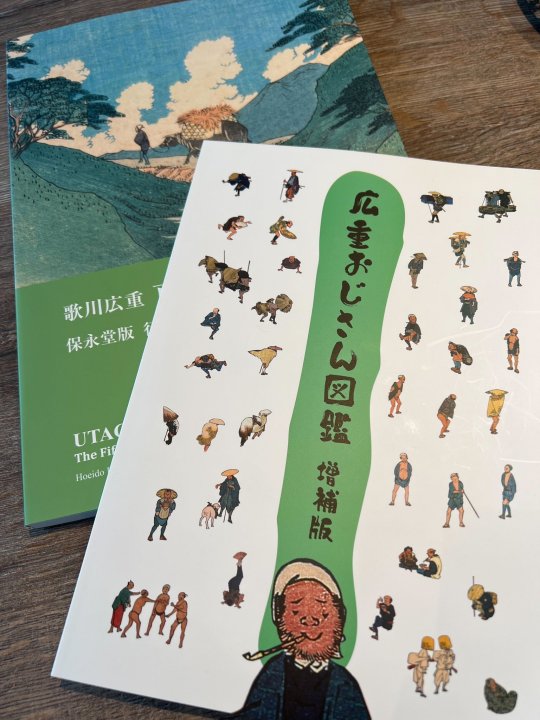
Interviewer: You paid a lot of attention to the details.
Anno: Yes, the expressions of those who arrived at the inn are great. Although they are just extras in the big picture, the personalities of each of those extras are meticulously depicted. Along the Kiso highway, there are three somewhat suspicious-looking characters, sticking out their bellies or warming their backsides by the fire. Those three definitely seem like they could be horse thieves or something. At first glance, because the landscapes are the main focus of the painting, you wouldn't notice them unless you looked closely.
Interviewer: Indeed, you really have to pay close attention to notice.
Anno: Exactly. But when you look closely, it's amazing, isn't it? Apparently, it was first noticed by the curators of a local art museum, and they proposed the exhibition. I admire how they found it. Hiroshige would probably be happy to know that his work was noticed.
Interviewer: That's wonderful. We're looking forward to your ukiyo-e style cover illustrations, Moyoco-san.
Anno: Yes, I'll do my best! (laughs)
(This interview was conducted on April 10th.)
◇ Composition by Taku Yamashita.
First published: "Neppū" June 2023 issue (published by Studio Ghibli)
The Instagram account for Moyoco Anno's kimono brand "Hyakuyoudo" is regularly updated with the latest information.
Sources:
https://note.com/anno_moyoco/n/n611652bab695
https://www.hyakuyoudo.com/
https://www.instagram.com/hyakuyoudo/?hl=es
https://twitter.com/anno_moyoco
https://twitter.com/anno_moyoco/status/1757691347098911015?s=20
#moyoco anno#anime#manga#shojo#josei#shojo manga#josei manga#shojosei#sugar sugar rune#kimono#design#art
11 notes
·
View notes
Text
Shoujosei Anime & Donghua in Development (as of 2023)
Continuing this idea from last year, here are the known shows and movies with pending release dates. This post will constantly be updated during 2023 until January 1st 2024. Remember to support when these shows eventually come out!
Anime series TBA




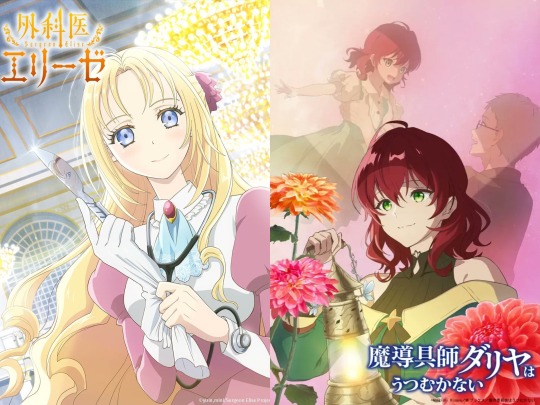

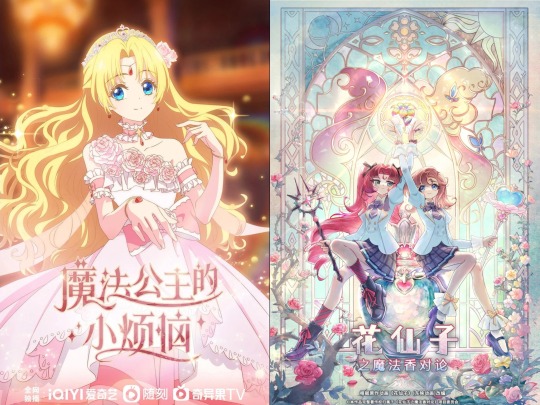
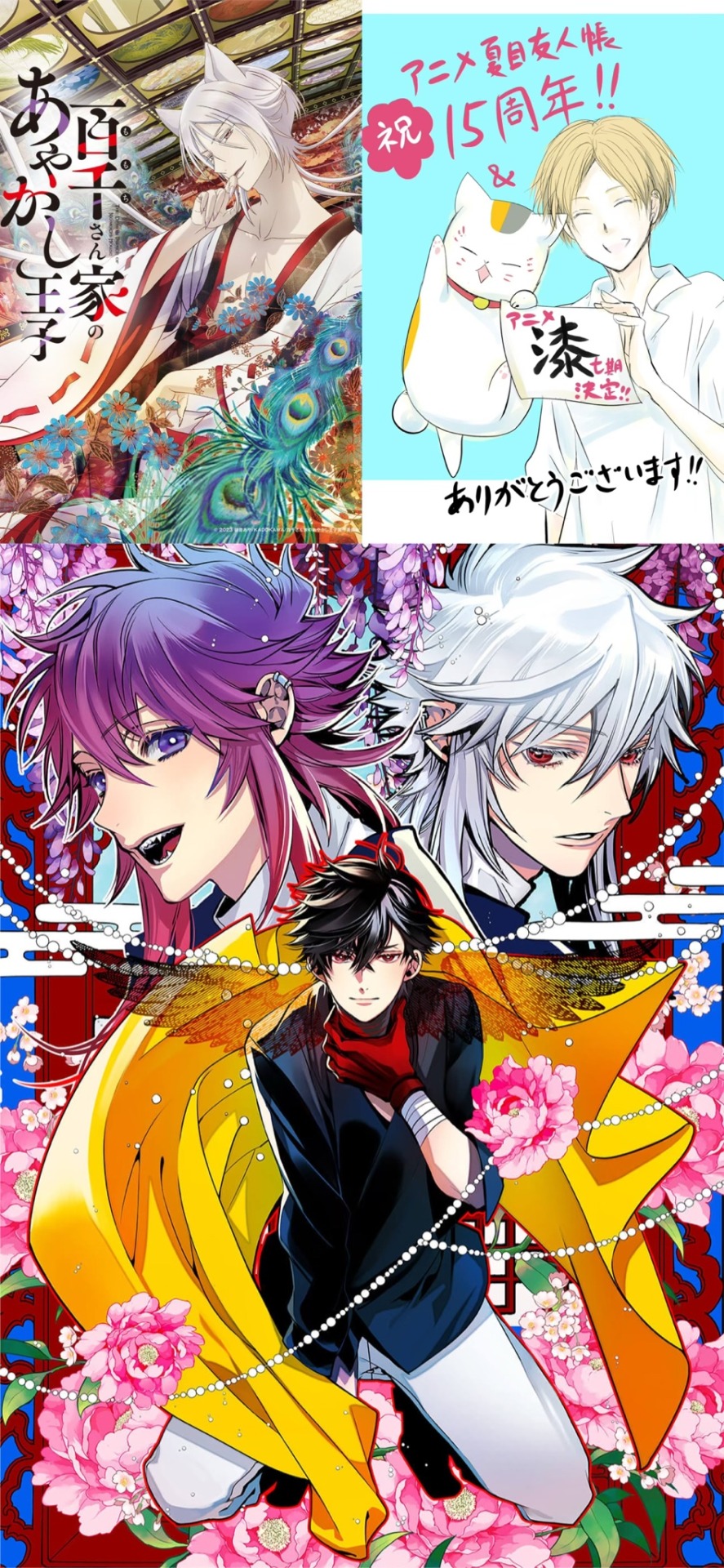
Movies TBA

MAL(My Anime List) Links:
https://myanimelist.net/anime/54632/Gekai_Elise
https://myanimelist.net/anime/54837/Akuyaku_Reijou_Level_99__Watashi_wa_Ura-Boss_desu_ga_Maou_dewa_Arimasen
https://myanimelist.net/anime/52359/Isekai_de_Mofumofu_Nadenade_suru_Tame_ni_Ganbattemasu
https://myanimelist.net/anime/54916/Cardcaptor_Sakura__Clear_Card-hen_Zoku-hen
https://myanimelist.net/anime/55150/Yarinaoshi_Reijou_wa_Ryuutei_Heika_wo_Kouryakuchuu
https://myanimelist.net/anime/53723/Acro_Trip
https://myanimelist.net/anime/56538/Kimi_ni_Todoke_3rd_Season
https://myanimelist.net/anime/56352/Loop_7-kaime_no_Akuyaku_Reijou_wa_Moto_Tekikoku_de_Jiyuu_Kimama_na_Hanayome_Seikatsu_wo_Mankitsu_suru
https://myanimelist.net/anime/56449/Madougushi_Dahlia_wa_Utsumukanai__Kyou_kara_Jiyuu_na_Shokunin_Life
https://myanimelist.net/anime/55889/Watashi_no_Shiawase_na_Kekkon__Watashi_no_Shiawase_na_Katachi
https://myanimelist.net/anime/55866/Yubisaki_to_Renren
https://myanimelist.net/anime/56701/Watashi_no_Shiawase_na_Kekkon_2nd_Season
https://myanimelist.net/anime/55597/Hananoi-kun_to_Koi_no_Yamai
https://myanimelist.net/anime/56228/Rekishi_ni_Nokoru_Akujo_ni_Naru_zo__Akuyaku_Reijou_ni_Naru_hodo_Ouji_no_Dekiai_wa_Kasoku_suru_you_desu
https://myanimelist.net/anime/48820/Mahou_Shoujo_Madoka%E2%98%85Magica_Movie_4__Walpurgis_no_Kaiten
https://myanimelist.net/anime/55823/Natsume_Yuujinchou_Shichi
https://myanimelist.net/anime/55998/Momochi-san_Chi_no_Ayakashi_Ouji
https://myanimelist.net/anime/54717/Mahoutsukai_Precure_2
https://myanimelist.net/anime/54855/Senpai_wa_Otokonoko
https://myanimelist.net/anime/55150/Yarinaoshi_Reijou_wa_Ryuutei_Heika_wo_Kouryakuchuu
https://myanimelist.net/anime/56843/Goukon_ni_Ittara_Onna_ga_Inakatta_Hanashi
https://myanimelist.net/anime/57031/Vampire_Dormitory
https://myanimelist.net/anime/57192/Yeosin_Gangnim
https://myanimelist.net/anime/56420/Haigakura
https://myanimelist.net/anime/55779/Cocoon
https://myanimelist.net/anime/57050/Kisaki_Kyouiku_kara_Nigetai_Watashi
https://myanimelist.net/anime/57189/Debu_to_Love_to_Ayamachi_to
https://myanimelist.net/anime/57152/Mahoutsukai_no_Yakusoku
https://myanimelist.net/anime/52967/Versailles_no_Bara_Movie
https://myanimelist.net/anime/56234/Hua_Xianzi__Mofa_Xiang_Dui_Lun
https://myanimelist.net/anime/51859/Touken_Ranbu__Kyoden_Moyuru_Honnouji
https://myanimelist.net/anime/57362/Hoshifuru_Oukoku_no_Nina
https://myanimelist.net/anime/54617/Kyuujitsu_no_Warumono-san
#shoujosei#shojosei#Shoujosei anime#shojosei anime#josei anime#shoujo anime#shojo anime#anime adaptation#외과의사 엘리제#Doctor Elise: Queen With a Scalpel#isekai de mofumofu nadenade suru tame ni ganbattemasu.#I’m doing my best to make myself home in another world#cardcaptor clear card#cardcaptor sakura#acro trip#akuyaku reijou level 99#villainess level 99#yarinaoshi reijou wa ryuutei heika wo kouryakuchuu#the do-over damsel conquers the dragon emperor#the rose of versailles#versailles no bara#who made me a princess#kimi no todoke season 3#my happy marriage season 2#yubisaki to renren#アニメ#女性漫画#少女漫画#Hananoi-kun to Koi no Yamai#natsume yuujinchou
39 notes
·
View notes
Text
short cake cake sounds like the most ridiculous manga ever and then it goes and makes you cry
#shortcake cake#short cake cake#shojosei#shoujo#shojo#suu morishita#manga#shoujo manga#shojo manga#morishita suu
3 notes
·
View notes
Text
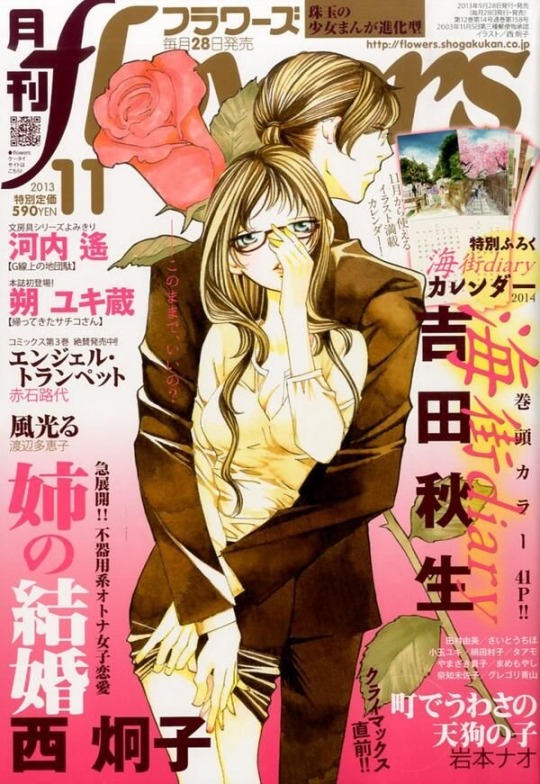
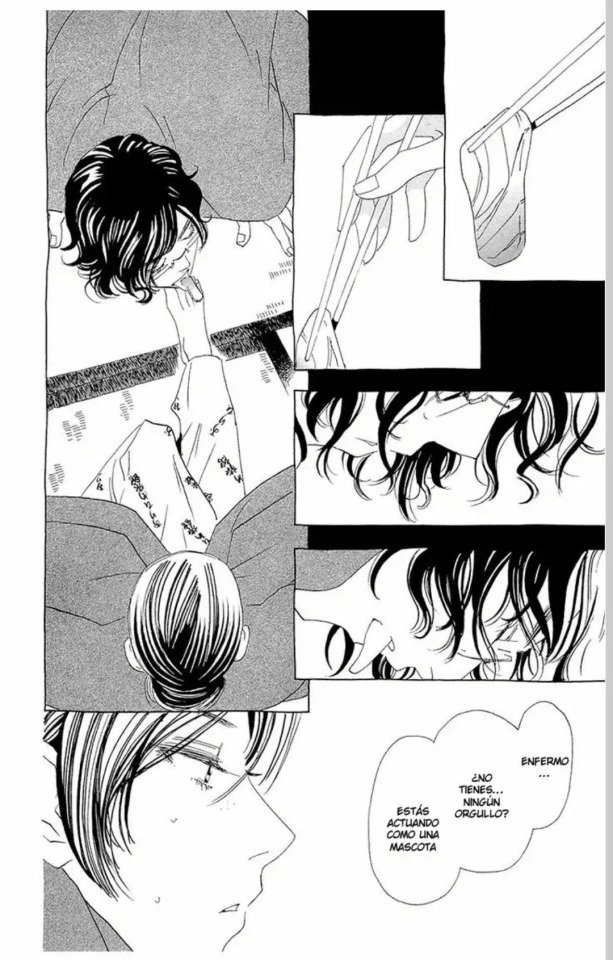
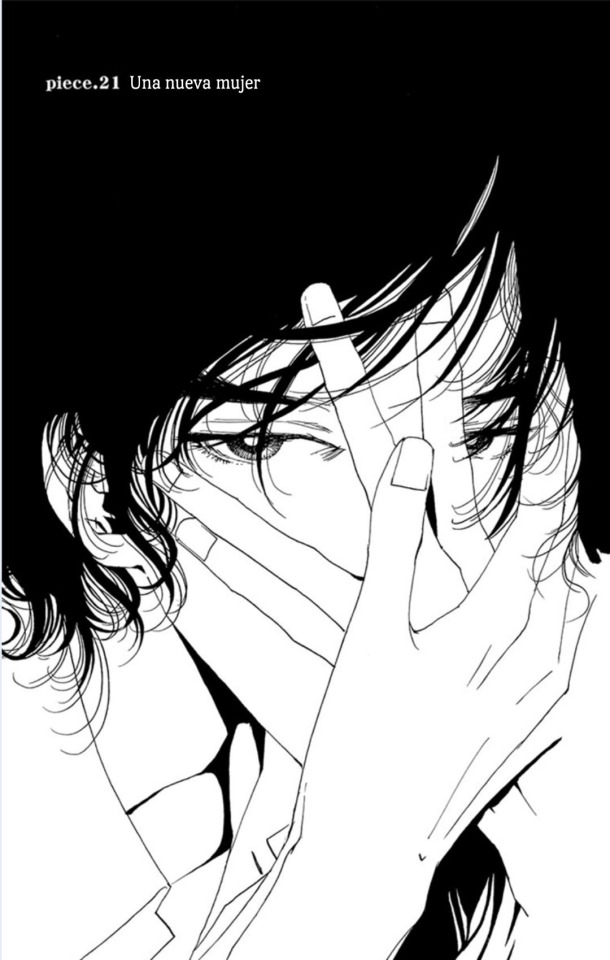
ane no kekkon - keiko nishi (2010-2014)
2 notes
·
View notes
Text



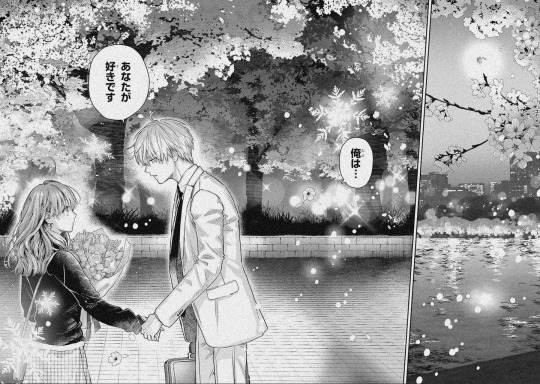
The First Meeting Scene & The Love Confession Scene
#they're finally dating#the cutest couple in the world#the ice guy and the cool girl#the ice guy and his cool female colleague#koori zokusei danshi to cool na douryou joshi#himuro#himuro yukiya#fuyutsuki#fuyutsuki mio#spoiler#josei manga#josei romance#josei#shojosei#romance manga#my comfort manga#manga cap#manga panel
14 notes
·
View notes
Text
My parents
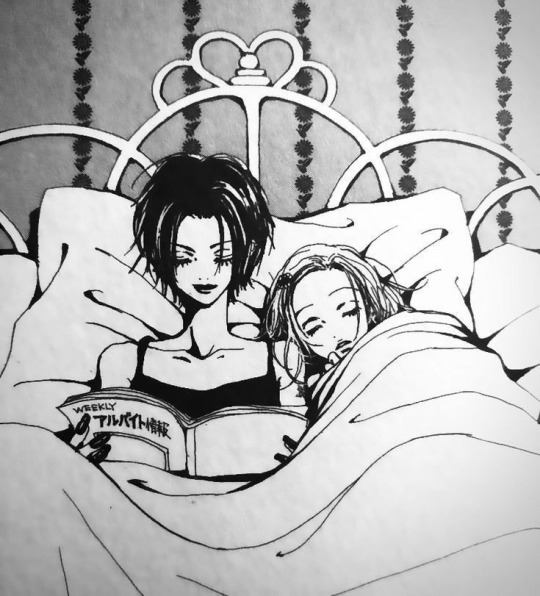
6 notes
·
View notes
Text
My Top 6 Favourite Shōjo & Josei Anime Series Released in 2023
It's fair to argue that we're in a shojo renaissance given the recent victories for the shoujosei community. To commemorate this I wanted to make a post highlighting my favourite shojosei series from this year's line-up—in the hopes of persuading others to watch them and cast their votes for them in the upcoming anime awards.
Keep in mind that some entries will date as far back as October 2022 because they officially qualify alongside this year's anime as a part of the roster for next year's anime awards.
○●○●○●○●○●○●○●○●○●○●○●○●○●○
Honourable Mentions:
-> Koori Zokusei Danshi to Cool na Douryou Joshi
English Title: The Ice Guy and His Cool Female Colleague
Genres: Comedy, Fantasy, Romance, Workplace, Mythology
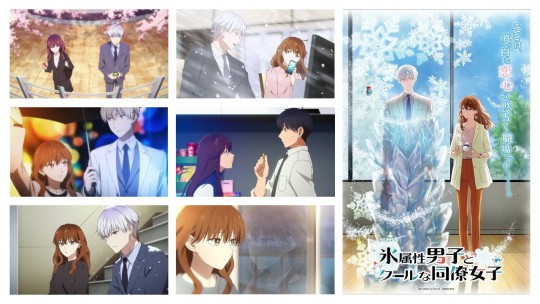
This anime follows Himuro, who involuntarily produces snow and ice phenomena—due to being a descendant of a Yuki-onna— when overwhelmed by his emotions, at his new office job. On his first day, he is saved from being late due to his affliction by the cool-headed Fuyutsuki—who turns out to be his new coworker. As they continue to work closely together, Fuyutsuki continues to provide pragmatic solutions to Himuro’s myriad of wintry quandaries—causing him to constantly want to repay her kindness. As Himuro’s feelings for her continue to grow, so does the frequency of his snowstorms—making them nearly impossible to hide.
The fun, relaxing atmosphere of this anime gives a wholesome and homely feel—making it worth the watch if you don’t mind the somewhat slow, romantic development.
-> Romantic Killer
Genres: Comedy, Romance, Supernatural, Parody, Reverse Harem
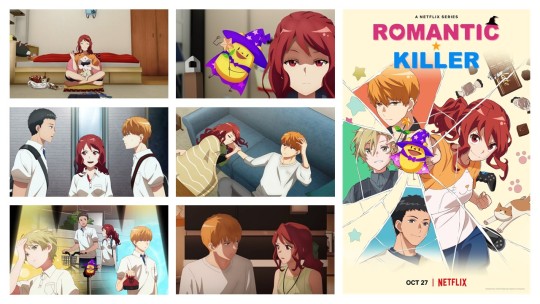
This series is about Anzu Hoshino, a high school girl with no interest in romance and lives solely for video games, chocolates, and her cat. Anzu’s daily life is turned upside down when a wizard forcibly turns her life into a harem, dating game in order to force her to find love. Out of anger and sheer stubbornness, she vows to resist no matter what.
While this is technically a shōnen anime, not a shōjo or josei—I wanted to include it anyway since it has a shōjo vibe to it especially because of the lack of fan service and unrealistic beauty standards. It has a similar vibe to other shoujo series like Watashi ga Motete Dousunda (Kiss Him Not Me) and Kaichou wa Maid-sama! While the storyline is seemingly basic, the show’s refreshing take on classic character archetypes and relatable humour make it worth a watch.
○●○●○●○●○●○●○●○●○●○●○●○●○●○
Top 6:
6) Yamada-kun to Lv999 no Koi wo Suru
English Title: My Love Story with Yamada-kun at Lv999
Genres: Romance, Comedy

Despite being dumped by her boyfriend, college student Akane Kinoshita continues to play the MMO they once played together and attends an offline game event in hopes of winning him back. There she meets Akito Yamada, an emotionless yet handsome high schooler, who belongs to the same guild as her. After running into her ex—who is accompanied by his new girlfriend—Akane is desperate for support causing her to rope Yamada into helping her and lending her a shoulder to cry on. As they spend more and more time together their feelings for one another continue to grow despite their innumerable differences.
This anime gives off a similar atmosphere to Wotaku ni Koi wa Muzukashi (Wotakoi: Love Is Hard for Otaku) with its humour, casual slice-of-life atmosphere, common themes, and equally catchy opening theme song. The character dynamics, voice acting, and music make this show worth the watch.
5) Sugar Apple Fairy Tale
Genres: Fantasy, Drama, Adventure, Romance

Despite living in a kingdom where fairies are enslaved by humans, through the possession of one of their wings, Anne Halford longs to see the day when humans and fairies are treated equally. Despite this, she is forced to purchase a warrior fairy to protect her on the perilous journey to the Royal Candy Fair in order to follow in her mother’s footsteps and become a Silver Sugar Master. Anne hires the sharp-tongued obsidian fairy, Challe Fen Challe for this job. Despite Anne promising to return his wing after the journey, Challe remains distrustful and wants nothing to do with humans. However, as the pair travel together, they learn more about each other as well as more about the different dynamics between fairies and humans across the kingdom.
While seemingly a typical fantasy-romance shōjo, this anime deals with some heavy themes such as sexism, misogyny, slavery, and historical politics. While these themes could certainly be interpreted as problematic, they aren’t just swept under the rug and are commented on but certainly could’ve been more developed upon. The show ultimately balances its light-hearted, slice-of-life scenes and heart-warming relationship-building moments well with its more dramatic subplots. The art and animation are beautifully done when compared to other releases in the genre, especially its use of colours, lighting, and fluidity. The female lead’s dedication to her craft as a silver sugar artisan is commendable and somewhat reminiscent of Shirayuki’s passion for herbalism in Akagami no Shirayuki-hime (Snow White with the Red Hair). Another selling point of the show is the subtle tension and slowly fostered development between its two leads. Both characters have their own decently developed mentalities and motivations independent of each other which is always delightful to see given how rare it can be. Another selling point of this anime is that both season 1 and season 2 were released this year thus making the overall episode count 24 giving viewers ample time to grow attached to its lovable cast and charming atmosphere without feeling pressured for instant development.
4) Kanojo ga Koushaku-tei ni Itta Riyuu
English Title: Why Raeliana Ended up at the Duke's Mansion
Genres: Fantasy, Romance, Otome Isekai
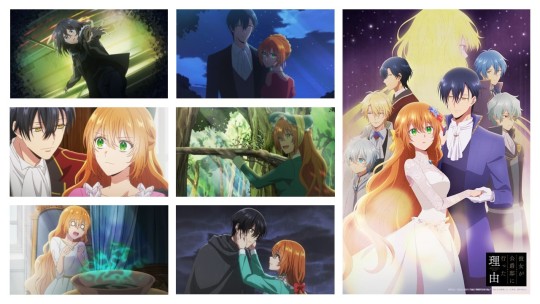
After Rinko Hanasaki (originally Eunha Park in the original manhwa) is pushed off a building, she is reborn as Raeliana McMillan—the daughter of a nouveau-rich baron in a historical romance novel she once read who is fated to die tragically young. To prevent the fruition of this plotline Raeliana is determined to end her engagement with the man who orchestrated her untimely demise, Lord Francis Brooks. To do this, she is forced to use her knowledge of the plot to blackmail the novel’s male protagonist, Duke Noah Wynknight, into a contract engagement thus rendering her previous one null and void. Little does she know that she has captured Noah’s interest, in place of the female protagonist, with this move buying her a lot trouble than she originally bargained for…
While only decently animated, the character dynamics, voice acting, pacing, and soundtrack make this anime stand out from other similar shows. The compelling chemistry between the two leads really elevates this anime from others with a similar premise. Overall while a decent adaptation from the manhwa, there is some room for improvement especially with the animation. Personally, I felt that this anime could’ve greatly benefitted from having 24 episodes (instead of the chosen 12 episodes) since parts covered by anime are mostly set up with the drama, action, and relationship development only taking place in later story arcs. Unfortunately, most of what makes this series praise-worthy and sets it apart from others with a similar premise wasn’t covered yet in the anime. Although reading the source material in advance had given me relatively high expectations that weren't quite met, I would like to clarify that I thoroughly enjoyed this anime.
3) Sasaki to Miyano Movie: Sotsugyou-hen
English title: Sasaki and Miyano Movie: Graduation Arc
Genres: Shounen Ai, BL, Slice of life, High School
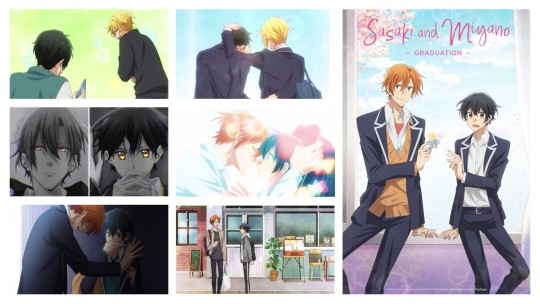
Continuing from season 1, this film follows Shūmei Sasaki and Yoshikazu Miyano as they embark on the next important stage of their romantic relationship as it is tested by Sasaki’s impending graduation from high school. The movie is accompanied by an animated short featuring the side character Taiga Hirano and his growing relationship with his roommate Akira Kagiura.
Despite being brief, the movie was filled with tons of important character-defining and relationship-building moments for both Miyano and Sasaki as well as their relationships with other characters and each other. The familiar soundtrack and art style were both nostalgic and comforting while the voice acting was top-notch, carefully conveying the immense depth of the characters’ multi-layered emotions throughout the various scenes. Throughout the movie, we saw just how much the main couple had grown since season 1… We see Sasaki becoming more confident in showing affection towards Miyano, as he holds himself back less and less. While Miyano became much more assured of himself and his feelings towards Sasaki. We see Sasaki’s backstory which provides much-needed context behind his insecurities in season 1. During this adaptation, fairly significant cuts were made from the original source material to accommodate the time constraints—which was naturally disappointing. The animated short that accompanied the movie was heart-warming and leaves watchers curious enough that there is room for a full adaptation of Hirano and Kagiura’s story…
2) Watashi no Shiawase na Kekkon
English Title: My Happy Marriage
Genres: Drama, Fantasy, Romance, Historical
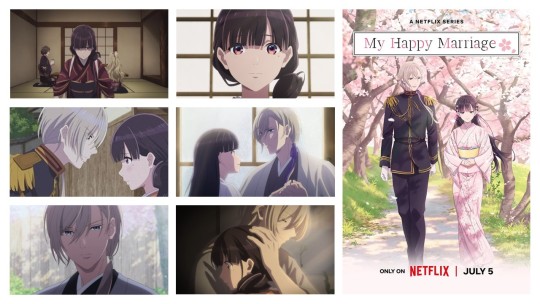
My happy marriage is set in an alternative version of the Meiji Restoration era where spirits and supernatural magic exist but in regression. Our protagonist, Miyo Saimori is born giftless despite belonging to a supernaturally talented family because of this she suffers immense abuse and mistreatment at the hands of her stepmother and half-sister while her father gazes on with indifference. Her hopes of building a happy life for herself seem distant after she is ordered by her family to marry Kiyoka Kudo, a man who is rumoured to be so cold-hearted all his previous marriage candidates ran off. Upon arriving at the Kudo estate, Miyo fully resigns herself to either a life of mistreatment or abandonment but is pleasantly surprised when her husband-to-be is anything but the monster she expected. Both of them begin realizing that the other may be their greatest opportunity to find true happiness and love as they slowly begin to each other. open their hearts to each other.
While many may write this anime off at face value thinking of it as just another Cinderella remake—they are sorely mistaken. While seemingly simple in its premise and title, the execution of the many technical elements and core themes that make this anime was nearly flawless. The beautifully detailed animation was a pleasant surprise. Historically speaking shōjo adaptations haven’t gotten the best budgets and heavily rely on having great storytelling and characterization to draw in its viewers. My Happy Marriage however not only has impeccably detailed character designs but also seamlessly fluid and well-paced animation sequences. Special attention was given to animating the opening and ending theme song sequences unlike with many other shows where the theme song animation is somewhat of an afterthought. The soundtrack and voice acting are both exemplary and encapsulate the moods of each respective scene well. The side characters are all well-crafted to suit their roles in the story and aren’t at all redundant with no single archetype being overused. The two leading characters are well-developed and show slow consistent and most importantly realistic growth. The series delves into lasting trauma caused by abuse and the long journey to healing that trauma. Despite only being 12 episodes, the plot and character-building does not get lost amongst the world-building or fantastical elements. This anime delves into the intricacies of human emotions and relationships as well as the main couple’s personal struggles and motivations making us as the audience want to root for them. Ultimately all these elements blend seamlessly to produce a charming and heart-warming show capable of stirring up the emotions of its audience.
1) Kōkyū no Karasu
English title: Raven of the Inner Palace
Genres: Fantasy, Mystery, Historical, Mythology, Supernatural
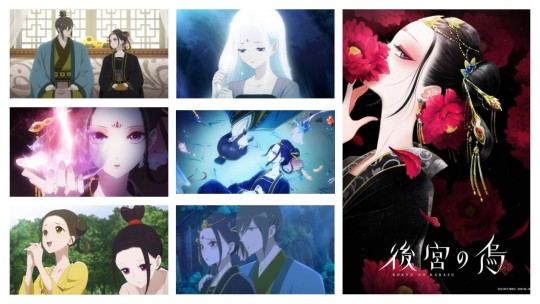
The Raven Consort, Ryuu Jusetsu (originally Liu Shouxue in the original source material) is both venerated and feared amongst those in the royal court. Despite being titled as a consort, she does not have any contact with the emperor, Ka Kōshun (originally Xia Gaojun), and lives isolated from everyone else. Her fabled mystical abilities make her the subject of many rumours as she is said to take on any request from recovering lost belongings to casting curses. One day her quiet solitude is disturbed when the newly crowned emperor barges into her palace with a request. Despite finding his subsequent frequent visits annoying, she cannot bring herself to turn him away. She soon finds herself forging several meaningful connections with others, despite the warnings of her predecessor, ultimately forcing her to confront a past that was best left concealed.
This show’s unique character designs and uncommon setting make it stand out visually despite its humble budget. While seemingly episode in nature, this show has an intricate overarching plot with fantastic character development. The show does a great job at depicting the main protagonist’s motivations, internal struggles, and development while still maintaining the mystery surrounding her—thus leaving plenty of room for further growth and development. Another thing I greatly appreciated in this anime was its subtly. Rather than just blatantly exposing complex motivations, moral stances, internal conflicts, and relationship dynamics of and between its characters through quotidian dialogue—the show instead chooses to shrewdly unveil this through the actions and expressions of its characters alongside the use of meaningful dialogue. Despite not being presently romantically involved the budding relationship between its two leads is carefully developed and slowly built upon in such a way that doesn’t make the show feel like just another forced or contrived romance elevating the show beyond layperson’s expectations for shōjo and josei anime. Despite somewhat, complex historical injustices being brought up in the anime, it is more focused on its protagonist helping others find peace through self-forgiveness and remembrance than seeking retribution. This has led to criticisms that the pacing of the series is too slow and that the plot lacks satisfying action sequences. However, in my opinion, the show succeeds in its goal of telling tales about the complexity of human emotions and relationships that transcend life and death. Another aspect of this show that really stood out was the soundtrack, especially its ending theme song, which exhibits a uniquely haunting melancholic ambiance that makes me want to listen to it repeatedly. This series is undoubtedly deserving of the title of an underrated gem—given its unique artistic expression, intriguing emotional storytelling, and character development—and has an immense amount of the potential for a follow-up season.
○●○●○●○●○●○●○●○●○●○●○●○●○●○
[P.S. I'm really going to miss watching My Happy Marriage and Sugar Apple Fairy Tale every week—but at least season 2 of the former has been confirmed😭]
#I plan to do a similar post about shojosei series that deserve sequel seasons sometime soon so stay tuned#I didn't make anyone too mad by adding Romantic Killer here...#but I couldn't make a separate post since it was probably the only shounen romance anime I liked this year#shoujo#shojo#shoujo anime#shoujo manga#shōjo#josei#josei anime#josei manga#shojosei#otome isekai#romance anime#kokyu no karasu#kokyuu no karasu#kōkyū no karasu#raven of the inner palace#my happy marriage#watashi no shiawase na kekkon#sasaki to miyano#sasaki and miyano#kanojo ga koushaku tei ni itta riyuu#why raeliana ended up at the duke's mansion#yamada kun to lv999 no koi wo suru#sugar apple fairy tale#my love story with yamada kun at lv999#romantic killer#koori zokusei danshi to cool na douryou joshi#the ice guy and his cool female colleague
104 notes
·
View notes
Text
Got a new manga yesterday

It’s called “Don’t Call it Mystery” by Yumi Tamura and it is so good. I decided to pick it up because of
On YouTube because I’ve been actively trying to consume more shojo and josei lately. You all should check her channel out if you love shojo and josei. Or simply are looking for good manga recommendations. And I’m so glad I took her recommendation. As you can assume from the title it’s a crime mystery drama about a college student solving crimes, but takes a bit more serious approach to the concept of a young crime solver. It has multiple twists I didn’t see coming. And the art is so pretty. If you like realistic mystery crime dramas I suggest picking this up. And check out Colleen’s channel for more information about all kinds of shojo goodness.
Here is its Amazon purchase link.
#Don’t call it mystery#yumi tamura#shojosei#shojo manga#what i’m reading#manga recommendation#Colleen’s manga recs#josei manga
2 notes
·
View notes